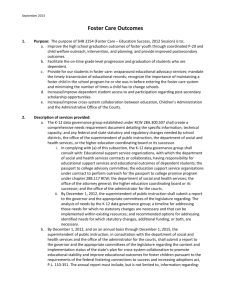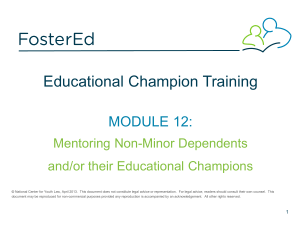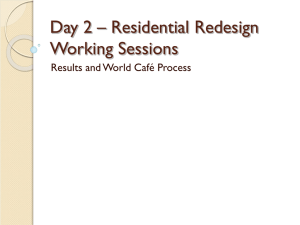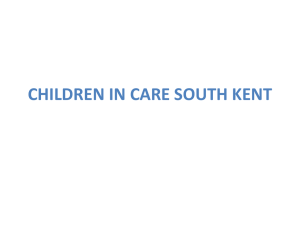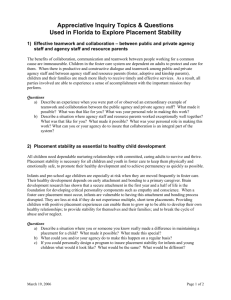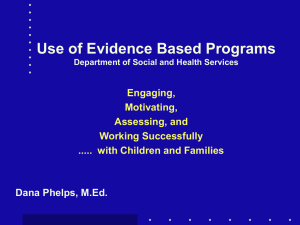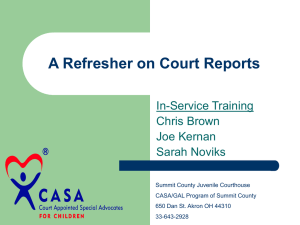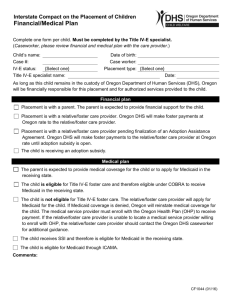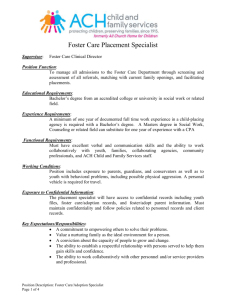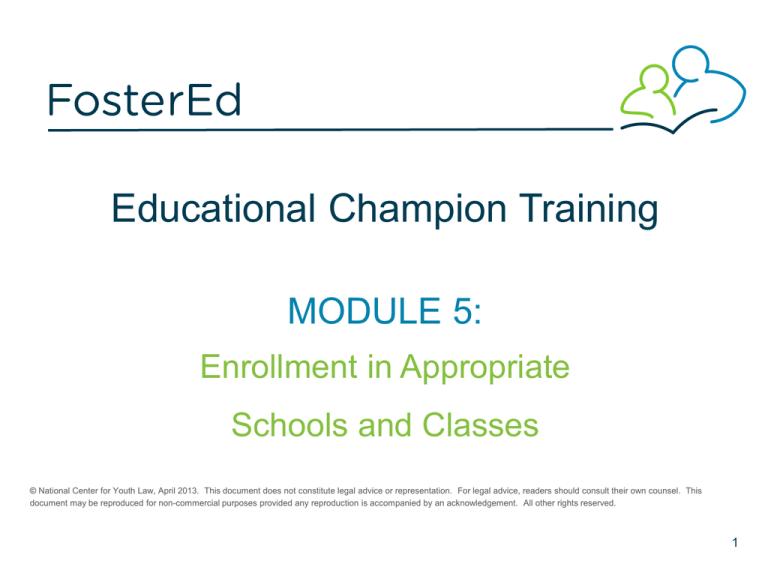
Educational Champion Training
MODULE 5:
Enrollment in Appropriate
Schools and Classes
© National Center for Youth Law, April 2013. This document does not constitute legal advice or representation. For legal advice, readers should consult their own counsel. This
document may be reproduced for non-commercial purposes provided any reproduction is accompanied by an acknowledgement. All other rights reserved.
1
Why Focus on Enrollment in Appropriate
Schools and Classes ?
Many Foster youth:
Frequently experience multiple changes in school placement.
Encounter barriers to school enrollment and problems with transfer
of school records.
Are enrolled in inappropriate schools or classes.
APRIL 2013
2
Understanding the importance of
school stability.
There are many challenges that come along with a change in
school placement.
When a child moves from one school to another, s/he can faces
many transitions, including:
A new classroom
A new teacher
A new routine
New classmates
APRIL 2013
3
What can I do as an Ed Champion?
Educational champions have an important role in
positioning the child for success; they must ensure the
child is enrolled in the right school and classes.
Promoting educational stability for the child is a KEY
FACTOR in their academic success.
You can promote school stability by minimizing the # of
school placements.
APRIL 2013
4
Do your best to help promote school stability.
If the child is facing a possible school change and you don’t think
it’s in the child’s best interest to move schools, speak up.
Contact the school district foster youth education liaison, the County
Office of Education foster youth services coordinator, the child’s
attorney, and the social worker.
Advocate for school stability at court hearings.
APRIL 2013
5
Are there any school stability laws
that can help?
California law gives foster youth the right to stay in their
“school of origin” (or “home school”), even if they transfer out
of the district, if it is in the child’s best interests.
For many foster youth, this ensures school stability even
when the child’s home placement changes.
APRIL 2013
6
What is a school of origin?
“School of origin” means:
The school that the foster child attended when permanently
housed; OR
The school in which the foster child was last enrolled; OR
The school the child has a connection to AND attended
within the immediately preceding 15 months AND the foster
youth liaison, education rights holder, and child agree is in
the child’s best interests to deem it the “school of origin.”
APRIL 2013
7
When can the child remain in their
school of origin?
Foster youth must be permitted to:
Stay at their “school of origin” as long as they remain under the
court’s jurisdiction.
Stay at their “school of origin” for the remainder of the school year,
if the court’s jurisdiction is terminated. Matriculate with their peers
for as long as the child is in foster care.
Example: A foster youth can stay in the same district/attendance
area when transitioning from middle school to high school.
APRIL 2013
8
If the child does change schools, support the
child through the transition.
The new school must enroll the child immediately.
Missed school days = Missed opportunities for learning!
Check with the school to make sure all of the child’s
records are transferred.
Check with the school to make sure the child received
credit for all full and partial coursework completed at
other schools.
APRIL 2013
9
Help the child keep the same routines.
If the child has recently changed home placements, try to
help the child keep the same or similar school-related
routines.
If you are the child’s new caregiver, ask the social worker
about any school-related routines or study habits.
If a child is leaving your care, let the social worker know
about any school-related routines or study habits, so they
can share this with the new caregiver.
APRIL 2013
10
Help make sure the child is in a school
placement that is right for him/her.
If you believe that the child is enrolled in a school or in
classes that are not right for him/her, talk to school staff
about options and solutions.
Ensure that the child is in the least restrictive educational
program.
Ensure the child has access to the same academic
resources, services, and extracurricular activities that are
available to all students.
APRIL 2013
11
What if a mainstream class not appropriate?
The child should attend a mainstream school unless:
The child has an Individualized Educational Program (IEP)
requiring a different educational placement; OR
The ed rights holder determines that it is in the child’s best
interests to attend an educational program that is not a
mainstream school.
If age-appropriate, also talk to the child about school placement
options.
APRIL 2013
12
Other School Options.
There are different types of school placements that might be appropriate
options for the child.
These options may include:
Charter schools
Continuation high schools
Community day schools
Nonpublic schools
Adult schools
Independent study programs, and
A variety of alternative education programs, such as Job Corps or Youth Build.
APRIL 2013
13
Additional thoughts if you do not hold ed rights.
If you do not hold the child’s ed rights, collaborate with
the person who does to explore possible school
placement options for the child.
Check with the social worker on the best way to reach
out the ed rights holder to share your thoughts about
the child’s school placement situation.
APRIL 2013
14
If the youth is in middle or high school,
make sure his/her classes are the right fit.
Talk to the youth regularly about what classes s/he is taking, and how
the classes are going.
If the youth thinks the classes are too easy, talk to the youth and
school staff about honors or AP classes.
If the youth is struggling in a class, talk to the youth and school staff
about options and solutions.
Is this the right class for the youth?
Is tutoring available in this subject?
Can the teacher provide support or suggestions for improvement?
APRIL 2013
15
Consider getting input from other
adults involved in the child’s life.
Especially if the child does not live with you, you may
want to ask other adults in the child’s life for support and
feedback in making education-related decisions.
APRIL 2013
16
My Goals:
What I will do:
How often I will do this:
__________________
___________________
__________________
___________________
__________________
___________________
__________________
___________________
__________________
___________________
__________________
___________________
APRIL 2013
17
Resources.
This PowerPoint, Tip Sheets, Mentoring Modules, and supporting materials can
be found at: www.foster-ed.org.
If you have questions about the materials, please contact: info@fostered.org.
Other Resources:
AB 490 Factsheet and Frequently Asked Questions and Answers About AB
490, written by the California Foster Youth Education Task Force, available at
www.cfyetf.org/
Charter Schools FAQ Section 1 and Alternative Schools of Choice Program
Summary, available at www.cde.ca.gov
APRIL 2013
18

